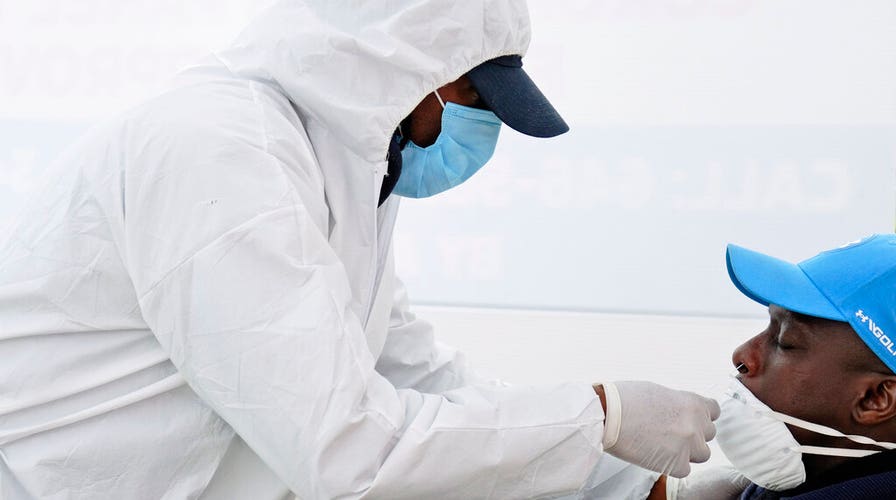Fox News Flash top headlines for April 23
Fox News Flash top headlines are here. Check out what's clicking on Foxnews.com.
Get all the latest news on coronavirus and more delivered daily to your inbox. Sign up here.
As most of the United States remains under some type of stay-at-home order, public health officials warn that the"stealthy spread" of the novel coronavirus will make reopening society a very complex and difficult task.
One of the hardest aspects is determining which tests to deploy in what circumstances to prevent new outbreaks from occuring as states or cities attempt to reopen.
People who are infected wtih COVID-19 but have no symptoms can still transmit the virus; along with their close contacts, they would need to be quarantined quickly to prevent the spread of the virus, according to the National Institutes of Health.
CORONAVIRUS HAS MUTATED INTO AT LEAST 30 DIFFERENT STRAINS, STUDY FINDS

Taiwan McCall, left, useless a nasal swab to test James Reese for COVID-19 in the Harlem section of New York, Monday, April 20, 2020. (AP Photo/Seth Wenig)
A second way testing is useful is to find individuals who have been infected, did not get seriously ill and can no longer trasmit the virus. These types of tests would use blood samples to detect antibodies of the virus.
However, a new study published in Nature Medicine lays bare the challenges for public health officials as they confront a complicated virus that's still in the process of being understood.
Researchers from China and Hong Kong analyzed throat swabs collected from 94 people who were moderately ill and hospitalized with COVID-19, according to the study's abstract. Frequent in-hospital swabbing provided an objective, chronological record of each patient’s viral loads and infectiousness.
According to Dr. Francis Collins, director of the NIH, the study's findings indicate the following:
Patients became infectious 2.3 days before the onset of symptoms, on average; their highest level of potential viral spreading likely peaked hours before their symptoms appeared; they became rapidly less infectious within a week, but the virus likely remains in the body for some time.
CORONAVIRUS LINGERED IN WOMAN'S EYES LONG AFTER IT CLEARED FROM HER NOSE, STUDY REVEALS
Scientists looked at data from a different study that documented the timing of 77 person-to-person transmissions of COVID-19. Comparing the two data sets, the researchers estimated that 44 percent of SARS-CoV-2 transmissions occur before people get sick.
"Based on this two-part model, the researchers warned that traditional containment strategies (testing only of people with symptoms, contact tracing, quarantine) will face a stiff challenge keeping up with COVID-19," wrote Collins, who was appointed to lead the NIH in 2009.
NIH TREATMENT GUIDELINES FOR COVID-19 DEVELOPED BY EXPERT PANEL
This type of transmission poses a huge challenge -- in terms of resoures, logistics and sheer manpower -- for public health officials looking to stem the tide of COVID-19 with testing widespread enough to safely bring people back into work and open up portions of daily life.
"[Researchers] estimated that if more than 30 percent of new infections come from people who are asymptomatic, and they aren’t tested and found positive until 2 or 3 days later, public health officials will need to track down more than 90 percent of their close contacts and get them quarantined quickly to contain the virus," Collins explained.
The NIH notes that the private sector has been exploring ways to deploy contact tracing at scale in a way that protects privacy and security, including the recently announced effort from Google and Apple.
As of Thursday afternoon, more than 2.6 million people were infected with COVID-19 worldwide, including over 854,000 in the United States.
